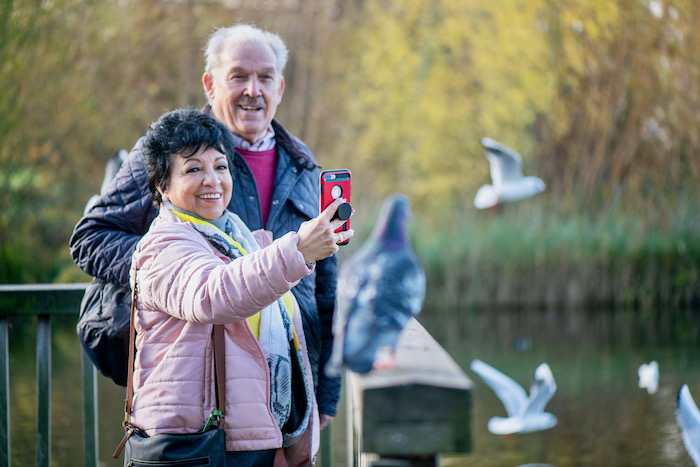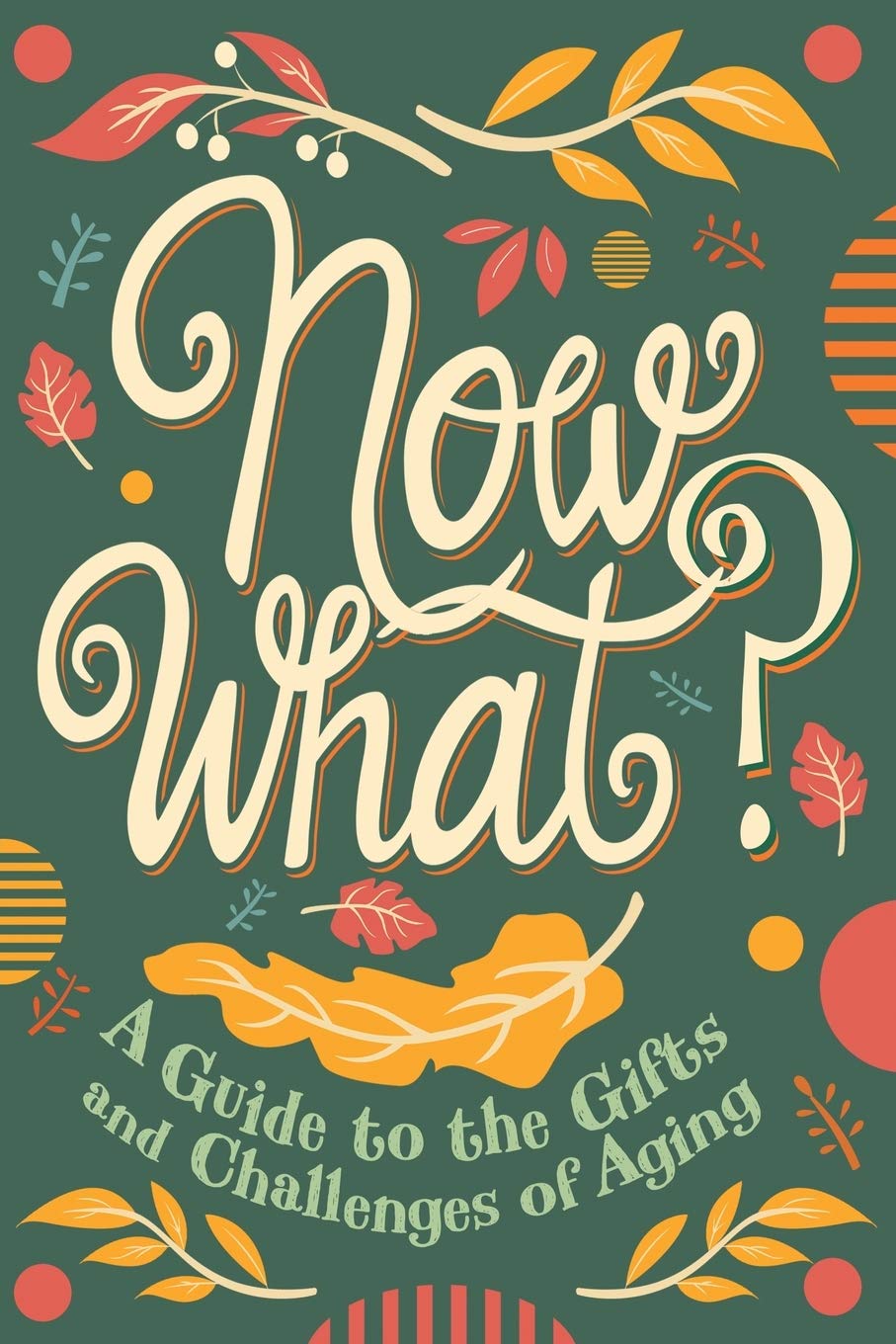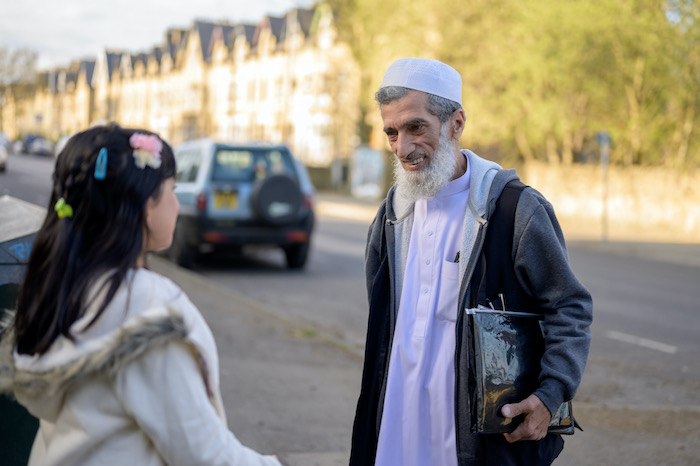
This photo is from the new free-to-use database of positive images of aging, sponsored by the publicly funded UK nonprofit The Centre for Ageing Better. (Yes, in Britain, they retain the “e” in “ageing.”) This is just one of the free resources to encourage healthy aging that are listed in this story. This particular image is by photographer Peter Kindersley. This version is web-res, but you can find higher-res versions of these photos at the database, described below.
.

Click on the cover to visit this book’s Amazon page. Elisa Di Benedetto is among a dozen writers who contributed to this non-profit book, designed to help families facing issues related to aging.
By ELISA Di BENEDETTO
Contributing Columnist
Over the next year, I will be sharing valuable resources I am finding through global networks of scholars, community leaders and journalists who are committed to improving media coverage of minorities, including: religious groups, especially at-risk minority faith communities; migrants and refugees; and the ever-growing “minorities” of elderly men and women in nations around the world.
One major commitment I have made, in cooperation with ReadTheSpirit online magazine, is participation in the newly launched Global Exchange on Religion in Society (GERIS), a European-Union-funded project through 2022 to encourage positive international conversations about diversity, coexistence and social inclusion.
Through 2022, GERIS is encouraging media professionals to work with scholars as well as community, nonprofit and religious leaders to promote awareness of these themes:
- “The challenge of living together in a globalized world of highly diverse societies;
- Positive experience of coexistence and inclusion, and shared citizenship;
- Fostering pluralism and respect for diversity through education;
- Challenge of being a minority;
- Tolerance and respect for diversity as a solution;
- Active citizenship, belonging and identity;
- Harnessing opportunities for reconciliation and transitional justice.”
As GERIS participants are organizing their work in this summer of 2021, we don’t yet have a lot of public resources to share.
However—because of my overall work as an international partner in various journalistic efforts to protect at-risk minorities, I am sharing today a remarkable array of resources for encouraging positive perspectives on healthy aging.
Get involved in the Decade of Healthy Aging
This spring, as a journalist, I attended a virtual conference of professionals from around the world focused on the United Nations’ Decade of Health Aging. If you visit this UN home page, you will find:
- A 7-minute YouTube video you can share that features “Leaders’ Voices,” messages from seven international leaders in this decade-long campaign. Because the video is hosted on YouTube, it’s easy to share with friends in small community gatherings or congregation-based groups to help spark discussion. (Here’s the direct YouTube link for that video.)
- The complete Decade for Healthy Aging Plan in six languages, including English, Spanish and Arabic. Just scroll down on that UN Healthy Aging page (linked above) and you can select the language you prefer to download.
- And, lots of other links, including one to learn more about how you and your community can get involved in the decade-long effort.
Resources for Positive Perspectives on Healthy Aging
At the United Nations conference I attended, a second treasure-trove of resources came from the World Health Organization. Here is the World Health Organization’s Combatting Ageism online portal. From this hub, you can branch out into dozens of other resources, including:
- As an individual or a leader in a community group or nonprofit institution, you can share details of what you are doing overall on behalf of this global effort. You also can share details about specific events, including photos of those events that might inspire others. Just follow the two prominent links: Get Involved and Register Your Event.
- Scroll down and you can choose to read the entire 200-page global report on ageism— or a shorter “executive summary” of the findings.
- Are you active on social media? On that page, there’s also a link to a Social Media and Infographic Package that provides 19 easy-to-share images and fact boxes suitable for social media.
- Eager to get involved? There’s a 22-page Toolkit for the Global Campaign to Combat Ageism available in English, French and Spanish. This is an all-in-one-PDF that combines elements of a “discussion guide,” a community-organizing strategy and lots of great ideas for communicators and group leaders. Then, if you are planning a dialogue or group discussion in your community, you will also want this 19-page Guide to Initiating a Conversation about Ageism.
- Finally, if you’re a communicator like me, there’s a specialized 5-page Quick Guide to Avoid Ageism in Communication. This guide points out a number of ways our daily journalism—or our social media—can contribute to stereotyping older men and women. This 5-page “guide” not a rigid stylebook. Rather, it raises questions to consider. In other words: If you are a community leader, his little guide also could help you to spark a spirited discussion among your colleagues.
And, Best of all: Check Out These Free-to-Use Positive Photos of Aging Men and Women
I saved the best resource for last!
One of the toughest challenges for professional communicators is finding free-to-use photographs to illustrate the aging theme in blogs, columns, newsletters and other publications. Usually, professionals adapt to this challenge by making sure to take their own photographs, which they are then free to use.
Every day, however, countless communicators are searching online databases like Wikimedia Commons, and many others, looking for images they can use to illustrate news items, columns and helpful online presentations related to aging. If you have searched those databases, you know there are not a lot of good free-to-use photographic choices to illustrate aging in a neutral or positive way—and, worse, a lot of the available photos involve old people in some kind of crisis.
The UK-based, publicly funded nonprofit Centre for Ageing Better has tackled this challenge head on, funding lots of fresh stock photography. When I discovered this photo database, I described it to ReadTheSpirit Editor David Crumm as we met via Skype this week and his immediate response was one word: “Wow!”
Starting at this Photo Resource Search Page within the Centre for Ageing Better’s website, you’ll likely find yourself spending quite a bit of time discovering the incredible array of photographs that you are free to use. If you share nothing else in this column with friends, this new photo database is a real treasure for anyone who regularly works on professional media!
You’ll also find that the photo archivists are paying attention to gender, ethnic, racial and religious diversity. You’ll find people working, people in both outdoor and indoor settings, people riding on public transportation, people enjoying yoga in the park or talking in small groups. Because this is a British effort, you’ll find people who play cricket. There are a number of distinctive British gems in this treasure box.

This is an example of one of the multi-generational, cross-cultural photographs from the new Centre for Ageing Better photo database. If you click on this photograph, you will jump to the photo database’s search page. This particular group of photos is called “conversation on the street.” Type that phrase into the search box and you will see the various options, including this picture. You can choose from web-res or higher-res versions of this photo. This photograph is by David Tett.
Care to Read More?
Finally, here’s just one more reminder to check out the book to which I contributed along with a dozen other writers: Now What? A Guide to the Gifts and Challenges of Aging. The production of this book was a non-profit effort co-sponsored by a dozen U.S.-based nonprofit organizations that work with aging and at-risk communities. The book is a guide to dozens of the common challenges families face as their loved ones age. The best part of the book is that it takes a “strength-based” approach to this theme. That means, the book also emphasizes many gifts, strengths and creative ideas shared by elderly men and women.
.
Elisa Di Benedetto is an internationally known journalist specializing in covering religious and cultural diversity as well as global migration and refugee issues. She is co-managing director and web editor of The International Association of Religion Journalists, a worldwide network of top journalists who cover religion. Elisa also is an active member in a number of other professional networks that promote best practices in covering minorities and at-risk populations. She contributed to the new book, “Now What? A Guide to the Gifts and Challenges of Aging.”